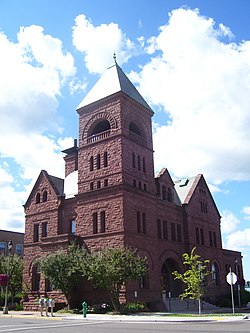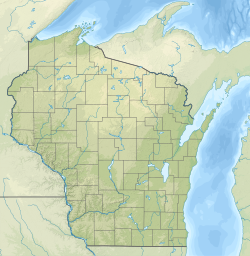
Price County is a county in the U.S. state of Wisconsin. As of the 2020 census, the population was 14,054. Its county seat is Phillips.

Bayfield County is a county located in the U.S. state of Wisconsin. As of the 2020 census, its population is 16,220. Its county seat is Washburn. The county was created in 1845 and organized in 1850. The Red Cliff Band of Lake Superior Chippewa has a reservation in Bayfield County and is the county's largest employer.

Ashland County is a county located in the U.S. state of Wisconsin. As of the 2020 census, the population was 16,027. Its county seat is Ashland. The county was formed on March 27, 1860, from La Pointe County. The county partly overlaps with the reservation of the Bad River Band of the Lake Superior Tribe of Chippewa Indians.

Ironwood is a city in Gogebic County in the Upper Peninsula of the U.S. state of Michigan, about 18 miles (29 km) south of Lake Superior. The city is on US Highway 2 across the Montreal River from Hurley, Wisconsin. It is the westernmost city in Michigan, situated on the same line of longitude as Clinton, Iowa and St. Louis, Missouri. The population was 5,045 at the 2020 census, down from 5,387 at the 2010 census. The city is bordered by Ironwood Township to the north, but the two are administered autonomously.

La Pointe is an unincorporated community in the town of La Pointe, Ashland County, Wisconsin, United States. It is on the western shore of Madeline Island, the largest of the Apostle Islands. Downtown La Pointe is adjacent to the Madeline Island Ferry dock. La Pointe has a post office with ZIP code 54850.
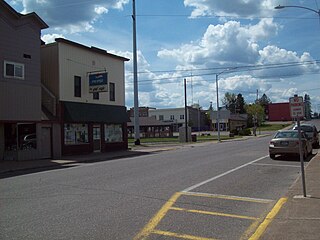
Park Falls is a city in Price County, Wisconsin, United States. The population was 2,462 at the 2010 census. Located in the woods of north central Wisconsin, primarily the Chequamegon National Forest, Park Falls is a small community divided by the North Fork of the Flambeau River, a popular destination for fishing, canoeing and whitewater rafting.

Washburn is a city and the county seat of Bayfield County, in the U.S. state of Wisconsin. The population was 2,051 at the 2020 census. The city is just east of and adjacent to the Town of Washburn. It is in northern Wisconsin, on the shore of Lake Superior's Chequamegon Bay.
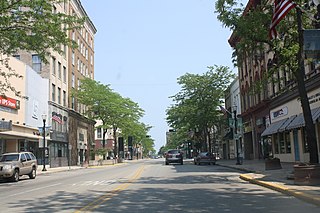
Fond du Lac is a city in and the county seat of Fond du Lac County, Wisconsin, United States. The population was 44,678 at the 2020 census. The city forms the core of the Fond du Lac metropolitan statistical area, which includes all of Fond du Lac County. Fond du Lac is the 348th-largest metropolitan area in the United States.

Manitowoc is a city in and the county seat of Manitowoc County, Wisconsin, United States. The city is located on Lake Michigan at the mouth of the Manitowoc River. According to the 2020 census, Manitowoc had a population of 34,626, with over 50,000 residents in the surrounding communities.

The Bad River LaPointe Band of the Lake Superior Tribe of Chippewa Indians or Bad River Tribe for short are a federally recognized tribe of Ojibwe people. The tribe had 6,945 members as of 2010. The Bad River Reservation is located on the south shore of Lake Superior and has a land area of about 193.11 square miles (500.15 km2) in northern Wisconsin, straddling Ashland and Iron counties. Odanah, the administrative and cultural center, is located five miles (8.0 km) east of the town of Ashland on U.S. Highway 2. The reservation population was 1,545 in 2020. Most of the reservation is managed as undeveloped forest and wetland, providing a habitat for wild rice and other natural resources.
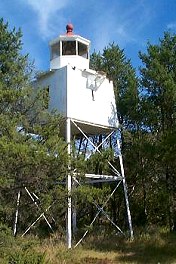
The Chequamegon Point Lighthouse is a lighthouse located on Long Island, one of the Apostle Islands, in Lake Superior in Ashland County, Wisconsin, near the city of Bayfield.

State Trunk Highway 13 is a state highway running north–south across northwest and central Wisconsin. WIS 13 serves as a major north–south route connecting the communities of Wisconsin Dells, Wisconsin Rapids, Marshfield and Ashland. WIS 13 is part of the Lake Superior Circle Tour from its northern/western terminus to Ashland at is eastern junction with U.S. Highway 2 (US 2). The road also provides access to the Apostle Islands National Lakeshore off the Lake Superior shoreline at Bayfield. The highway is two-lane surface road with the exception of various urban multilane road sections.

US Highway 2 (US 2) is a part of the United States Numbered Highway System that runs from Everett, Washington, to St. Ignace, Michigan. In Wisconsin, the highway enters runs east–west across the northwestern part of the state and re-enters the state in the northeast part. It runs from the Richard I. Bong Memorial Bridge over the Saint Louis Bay at Superior, where it enters from Minnesota, east to the Michigan state line near Hurley. Further east, US 2 re-enters Wisconsin from Michigan in Florence County and briefly traverses that county before re-entering Michigan. US 2 is a Wisconsin Corridors 2020 Connecting route east of its concurrency with US 53. The section concurrent with US 53 is a Wisconsin Corridors 2020 Backbone route.

Glidden is an unincorporated census-designated place in the town of Jacobs in Ashland County, Wisconsin, United States. It is located on County Highway N near Wisconsin Highway 13. As of the 2010 census, its population was 507.

La Pointe is a town in Ashland County in the U.S. state of Wisconsin. The population was 428 at the 2020 census. The town includes all of the Apostle Islands except for the westernmost four, which lie in the towns of Bayfield and Russell in Bayfield County. The town includes the unincorporated community of La Pointe on Madeline Island, the largest of the Apostle Islands. The communities of Middleport and Old Fort are also located in the town. Its name in the Anishinaabe language is Mooningwanekaaning, meaning "The Home of the Golden Breasted Woodpecker".
The 25th Senate District of Wisconsin is one of 33 districts in the Wisconsin Senate. Located in northwest Wisconsin, where Wisconsin meets Lake Superior, the district comprises all of Ashland, Bayfield, Burnett, Douglas, Iron, Polk, Sawyer, and Washburn counties. It contains the cities of Superior, Ashland, Bayfield, Hayward, Spooner, and Washburn. The district also includes the Bad River Indian reservation and the Chequamegon–Nicolet National Forest.
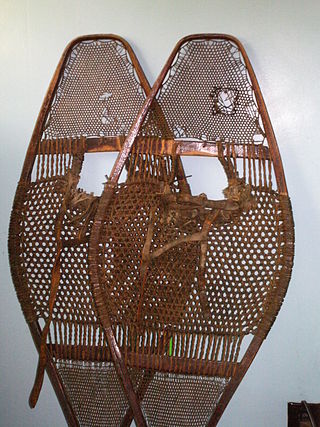
Asaph Whittlesey was the first Wisconsin state legislator from the Lake Superior region. In 1854, he settled the city of Ashland, Wisconsin.

Olli (Olof) Kiukkonen Kinkkonen was a Finnish-American dockworker and logger. He was lynched in Duluth, Minnesota, by the Knights of Liberty on September 18, 1918, for renouncing his American citizenship because he wanted to avoid fighting in World War I.

Robert C. Pringle, originally named Chequamegon, was a wooden-hulled American tugboat that sank without loss of life on Lake Michigan, near Sheboygan, Wisconsin, on June 19, 1922, after striking an obstruction.
The Knights of Liberty was an American volunteer nationalist secret society and vigilance committee active circa 1917–1918, claiming responsibility for violence against perceived disloyalty during World War I. They are known for the 1917 Tulsa Outrage in Oklahoma, the 1918 lynching of Olli Kinkkonen in Minnesota, and a spree of 1918 tarring and feathering events in Wisconsin and California.
